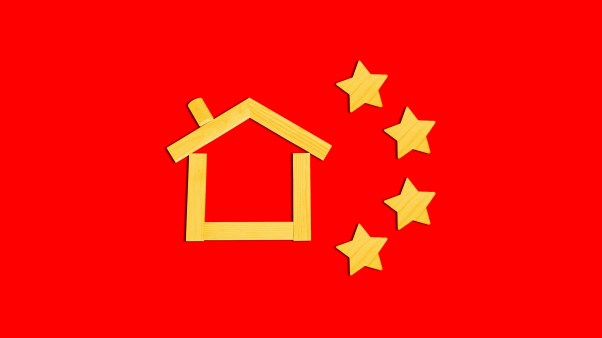Craig Goodworth is a contemporary artist compelled by the notion that "identity and geography are intimately related." In this short film from Nathan Clarke, Goodworth gives a tour of his installation in a Phoenix warehouse, where the raw elements of corn, water, wheat, asphalt, and a lone donkey reveal who Arizona is and how its borders shape its identity. The artist practitioner in residence in the Center for Peace and Justice at George Fox University, Goodworth is compelled by the Christian notion of restoration—that God's people are called to transform, rather than escape, what is.
Below, Goodworth, who grew up in Arizona, explains some of the concepts behind this installation, titled "Liminal Ground," and his growing body of work.
Why Phoenix?
Without wanting to sound too abstract, I'm interested in the relationship between the desert and the city. This wouldn't make sense in another city, in another arbitrary warehouse, because this warehouse once was granary. That story's important to me. It speaks so much to Arizona's history. This building enables me to look at issues of people and place and then to bring my artistic language, my background with materials, introducing more materials into a frame.
Why did you choose these materials?
You have corn wrapped in plastic, and you have water wrapped in plastic, and with the light in this specific space, that plastic starts to glisten on the corn, it starts to speak to the water. Water needs corn; corn needs water. Then you have the asphalt paired with the rubber, and obviously rubber tires speak to asphalt. There's this sort of industrial material made organic. Organic and industrial start to blur. The asphalt starts to look a lot like the parched clay, desert floor when there's drought. And those relationships are interesting to me, visually and conceptually.
What about the donkey? What's up with that?
About three months ago, I was thinking about the symbol of the donkey as both Beast of Burden and the prophetic significance of the donkey for Palm Sunday. And I thought, what if we got a donkey? It would push the boundary about what can constitute art and what can't. My practice is more about making something and figuring out what I made, than it is about what I'm going to make and then making it.
How does your faith inform your work as an artist?
I find the question deepens with the words of John Chrysostom: "The most perfect rule of Christianity, its exact definition, its highest summit is this: to seek what is for the benefit of all. I can not believe that it is for a man to be saved if he does not labor for the salvation of his neighbor." I don't think the labor excludes art; I think art can be part of that labor. The boundary between the two can be filled, the gap can be filled. This project starts to fill that.
"Liminal Ground" is the premiere (Abrahamic) interfaith theology-arts endeavor, and was funded in part by Logos Guildworks-iAbraham Ministries' Schlactus Gimilus Chassidim Fellowship 2011-2012.








